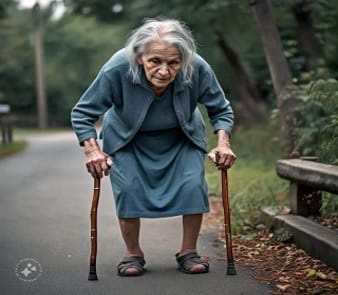Its not just a fracture
It’s a warning sign!!
What is Osteoporosis and Osteopenia?
Fracture Risk Assessment
Management of osteoporosis and osteopenia
Prevention
What is Osteoporosis?
Osteoporosis is a disorder characterised by reduced bone strength, decrease in bone density and destruction of bone tissue with increase in risk of fragility fracture ie low trauma fracture following a trivial fall. It is a silent disease until you have fracture.
Peak bone mass is achieved between age 20-39 and bone resorption starts between 40-60.
Osteopenia is when bones become weaker but not low enough to be diagnosed with osteoporosis. Fracture risk increases with age and low oestrogen levels. Osteopenia is diagnosed on a DEXA scan. It is known that those with osteopenia have a higher fracture risk than those with osteoporosis. More than 60% of white women over age 65 have osteopenia.
Menopause causes rapid bone loss starting 1 year before final period leading to nearly 20% of bone loss in first 5-7 years . It can cause 1 in 3 fractures mainly of wrist, hip and spine.
Lack of oestrogen results in increase in bone resorption and decrease in bone formation.
Fracture Risk Assessment
How do we measure bone health and risk of osteoporosis/osteopenia at menopause?
A) Risk Factors for osteoporosis and osteopenia
- Premature ovarian insufficiency (menopause under age 40)
- Early menopause age 40-45
- History of low fragility fractures – the risk of fracture is doubled with prior fracture
- Family history of osteoporosis in 1st degree relatives ( mother, sister)
- Age over 65 ( In Europe all women over age 65 have a Bone scan called a DEXA scan to check bone density )
- Loss of height
- Endocrine disorders- untreated Hyperthyroidism, Cushing’s syndrome Diabetes
- Drug induced- steroids, chemotherapy, Anastrozole, Proton pump inhibitors like Omeprazole, some anti-depressants- SNRIs , anti-retroviral to treat HIV etc
- Vitamin D deficiency
- Malabsorption- Crohn’s disease, Coeliac disease
- Auto-immune diseases – Rheumatoid arthritis, SLE,
- Chronic kidney disease , severe liver disease , HIV
- Eating disorders- anorexia nervosa
- Alcohol->3 units / day . (1 unit is a 120 ml glass of wine, 285 ml glass of beer, or 30 ml of spirit)
B) FRAX score: FRAX Assessment is a tool which can be accessed at
shef.ac.uk/FRAX and gives the 10 year probability of fracture.
This score gives you a risk estimate of fracture and indication for DEXA scan.
- Low Risk- Life style advice only
- Medium Risk- Assess bone density with DEXA scan
- High Risk- Treatment advised with HRT under age 60 and Alternatives to HRT such as Alendronate etc above 60
C) DEXA scan : This is a bone scan which measures bone density at lumbar spine and hips .
Further information on DEXA scan can be accessed at
https://www.nhs.uk/conditions/dexa-scan/why-its-done/
DEXA scan should be done in
- All women above age 50 with risk factors for osteoprosis and under age 50 with fractures
- Women above age 65
- FRAX score shows intermediate to high risk of fractures
D) X ray: shows loss of disc space in spine ( vertebral crush fracture)
Management of Osteoporosis and Osteopenia
Indications for Rx
- Osteoporosis on DEXA scan
- Fragility fractures
- Osteopenia with additional risk factors listed above
•
Hormone Replacement Therapy (HRT) British Menopause Society Consensus statement on prevention and Rx of osteoporosis in post-menopausal women and POI ( October 2022) states that HRT is Rx of choice for prevention and reduces fracture risk by 33%.
HRT can be considered as 1st line Rx for prevention and Rx of osteoporosis under age 60 after doing a benefit risk analysis.
How much Oestrogen and for how long?
Standard oral oestradiol doses of 2 mg or Oestradiol patches 50 mcg will treat bone loss.
Evidence shows that lower doses of 1 mg oral Oestradiol and 25 mcg patches will prevent bone loss.
•
Other Bone strengthening agents - Bisphosphonates or Denosumab can be considered if HRT is contraindicated or patients have severe osteoporosis ( after discussion with Rheumatologist)
Prevention
At age 50 all women should be counselled about bone friendly life style changes such as
- Weight bearing exercises , muscle strengthening exercises , balance training
- Healthy diet, with adequate calcium and protein intake
- Avoid excess alcohol and smoking.
- Calcium and Vitamin D - Daily requirement of Calcium is 1000 mg and best source is from diet. Refer to Calcium Calculator at
https://www.osteoporosis.foundation/educational-hub/topic/calcium-calculator
for calcium content of foods. Vitamin D supplements – 1000 mcg daily
